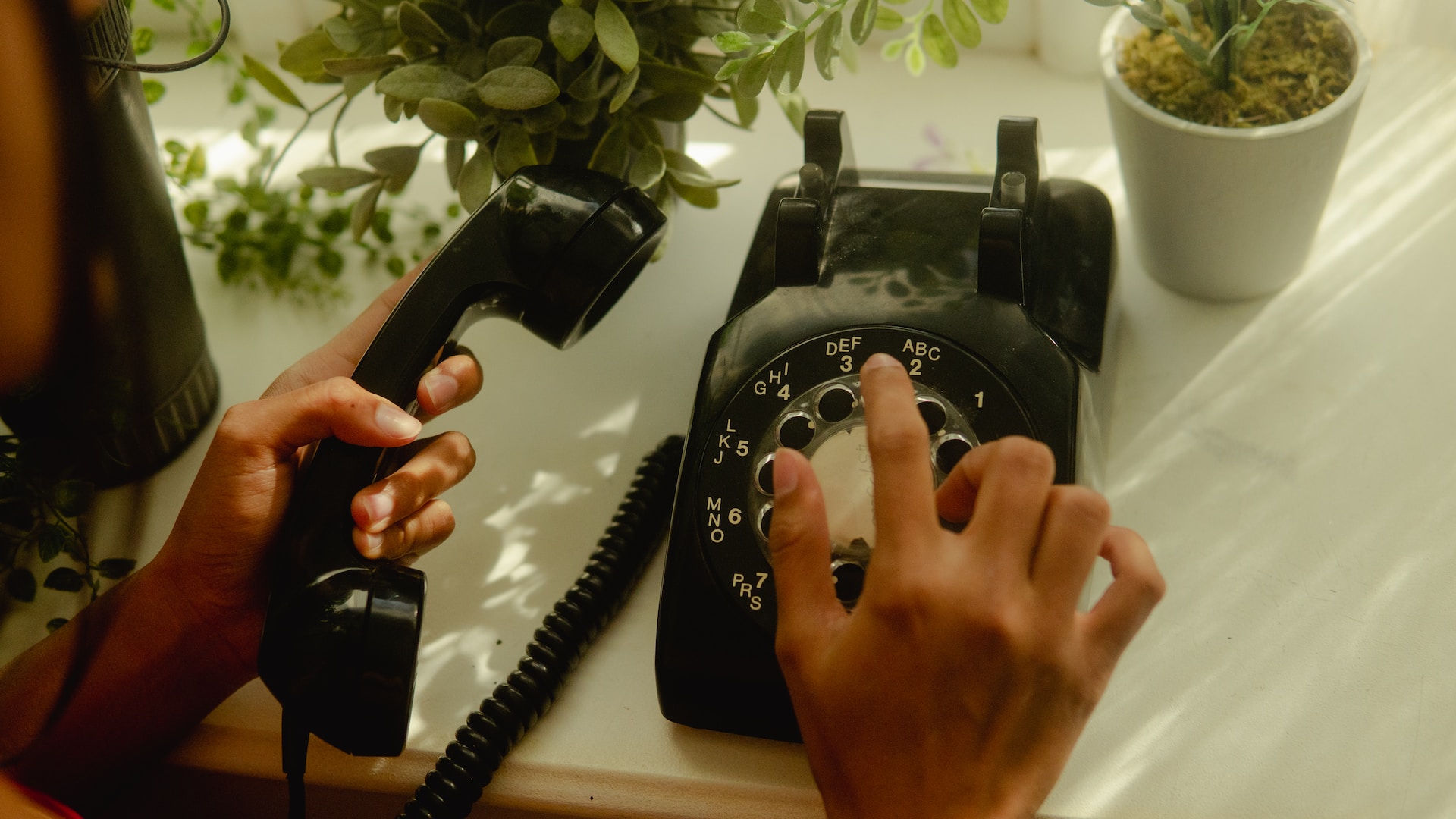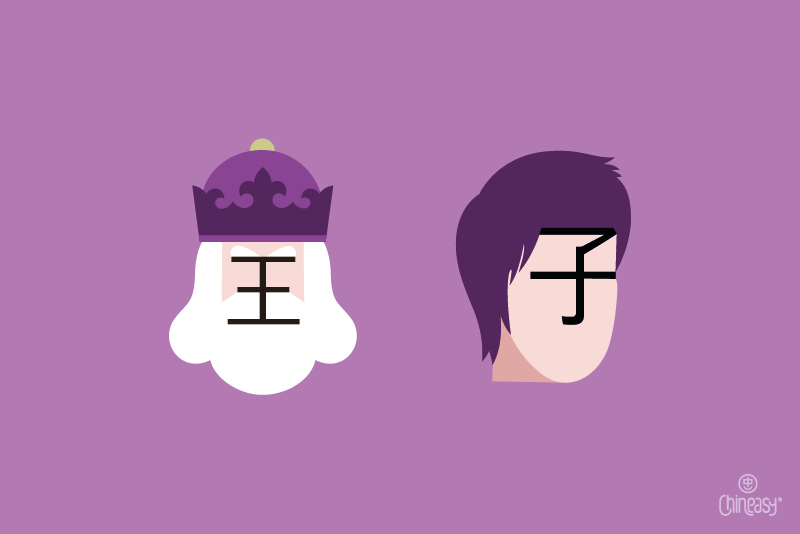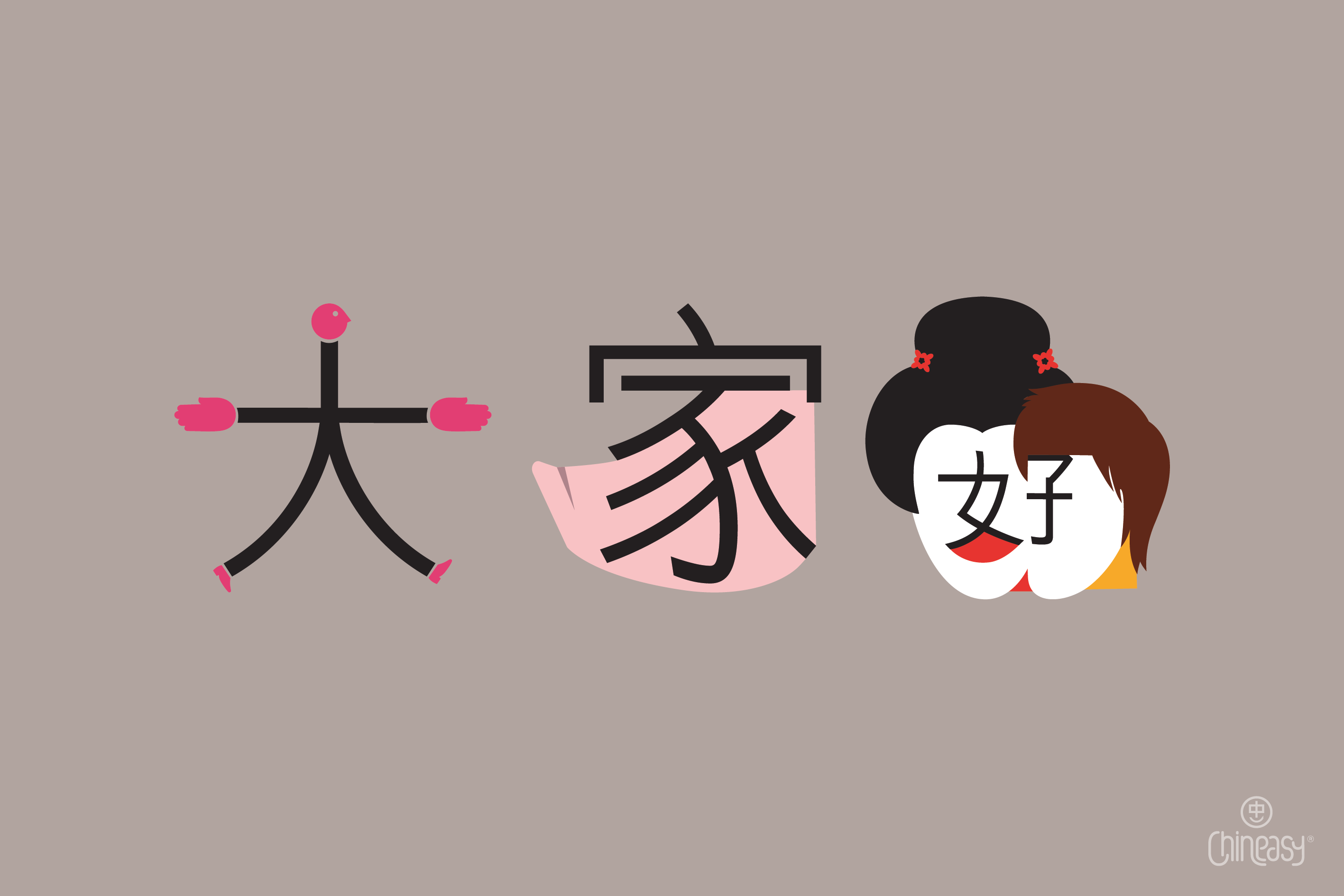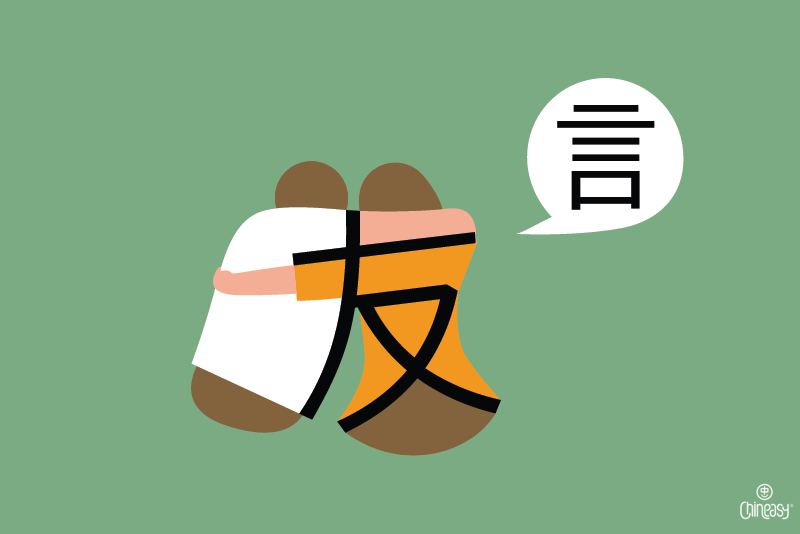Not every conversation happens right in front of us. When distance comes into play, we often rely on a phone, forging a different kind of dialogue.
That’s why, if you’re diving into the world of Mandarin, having a handful of telephone-specific phrases is essential.
In today’s post, we’re unveiling the top 10 basic Chinese phrases to give you the confidence to dial and chat in Chinese.
Ready to ring in a new skill? Let’s go!

Photo by Chase Chappell on Unsplash
Hello – 喂
喂 (wéi) is a unique greeting used predominantly for answering calls, distinct from the standard 你好 (nǐ hǎo), which means “hello” in face-to-face conversations.
It’s essential to note this if you don’t want to sound like you’re always answering a phone, even when meeting someone in person!
Who’s speaking? – 请问哪位?
请问 (qǐng wèn) is a polite way to say “may I ask,” and 哪位 (nǎ wèi) literally means “which person.”
Together, the phrase 请问一下 (qǐng wèn nǎ wèi) is a courteous way of asking, “Who’s speaking?” on the phone.
Written in traditional Chinese:
請問哪位?(qǐng wèn nǎ wèi)
It’s me, Xiaoming. – 是我, 小明
Just say 是我 (shì wǒ), literally “is me,” followed by your name, and you’ve told the other person it’s you.
Is Xiaoli there? – 小莉在吗?
在 (zài) means “to be here/there” in this context.
吗 (ma) is a yes/no question marker, turning the statement into a question.
Replace 小莉 (xiǎo lì) with the name of the person you’re asking for over the phone.
This phrase also gracefully fits scenarios like visiting a friend’s place.
Written in traditional Chinese:
小莉在嗎?(xiǎo lì zài ma)
Just a second – 等一下
Melding 等 (děng), “to wait,” with 一下 (yī xià), “a brief moment,” creates a universally polite plea for a short pause, whether on call or in person.
I’ll get Xiaoli for you. – 我去帮你叫小莉
This phrase seamlessly combines action and intention.
Using 我 (wǒ) for “I,” 帮 (bāng) for “to help,” 你 (nǐ) for “you,” and 叫 (jiào) for “to call,” it offers a polite way to indicate you’ll get someone for the caller
Written in traditional Chinese:
我去幫你叫小莉。(wǒ qù bāng nǐ jiào xiǎo lì)
Xiaoli is tied up now – 小莉在忙
Combine 在 (zài), indicating a current state, with 忙 (máng), “busy”, to relay unavailability.
Want to elaborate?
Use 她现在不能接电话 (tā xiàn zài bù néng jiē diàn huà), meaning she’s unable to answer the phone right now. For males, swap out 她 with 他 (tā).
Written in traditional Chinese:
她現在不能接電話。(tā xiàn zài bù néng jiē diàn huà)
I didn’t catch that. – 我没听到
If you’ve missed something during a phone call, let the caller know by saying 我没听到.
我 (wǒ) denotes “I,” while 没听到 (méi tīng dào) conveys “didn’t hear.”
Need a repetition? Say to the caller 再说一次 (zài shuō yī cì; again say one time), asking them to repeat.
Written in traditional Chinese:
我沒聽到。(wǒ méi tīng dào)
再說一次。(zài shuō yī cì)
Could you speak up a little? – 你可以大声一点吗?
你 (nǐ) is “you,” 可以 (kě yǐ) means “can,” 大声 (dà shēng) means “loud voice,” and 一点 (yī diǎn) means “a bit.”
Together, the question 你可以大声一点吗 is especially useful if you’re in a noisy environment or if the caller has a soft voice.
If you want to ask the person not to speak so loud, then replace 大声 with 小声 (xiǎo shēng; small + sound), and the rest of the sentence remains the same.
Written in traditional Chinese:
你可以大聲一點嗎?(nǐ kě yǐ dà shēng yī diǎn ma)
你可以小聲一點嗎?(nǐ kě yǐ xiǎo shēng yī diǎn ma)

Photo by Wesley Hilario on Unsplash
You’ve got the wrong number. – 你打错电话了
你 (nǐ) is “you,” 打错 (dǎ cuò) means “dial wrong,” and 电话 (diànhuà) is “telephone.” The last character 了 is a grammatical marker.
It’s a straightforward way to inform someone they’ve reached the wrong person.
Written in traditional Chinese:
你打錯電話了。(nǐ dǎ cuò diàn huà le)
There you have it! Armed with these ten phrases, you’re all set to navigate through basic telephone conversations in Mandarin.
With consistent practice, you’ll soon find that speaking Mandarin over the phone can be just as smooth as chatting face-to-face.
Keep ringing and keep learning!



